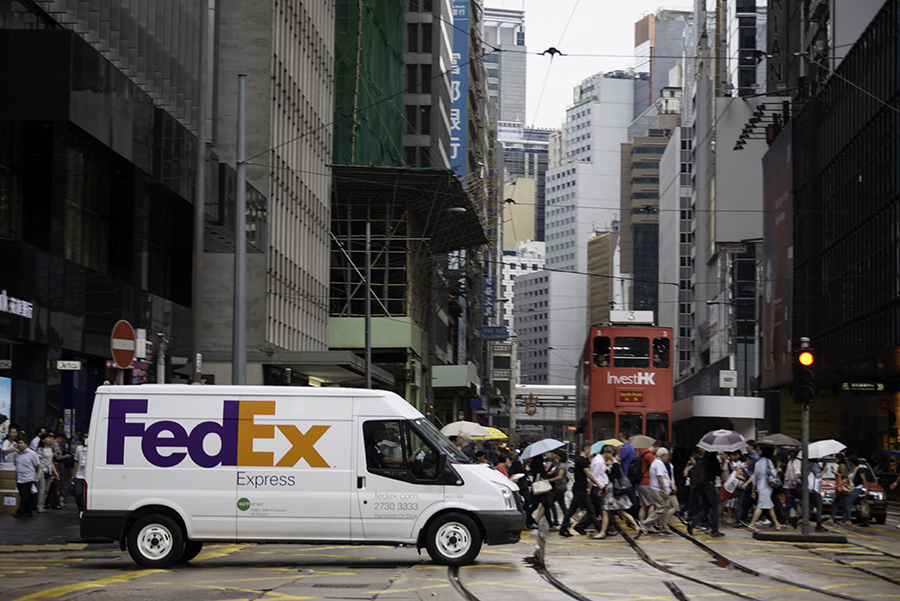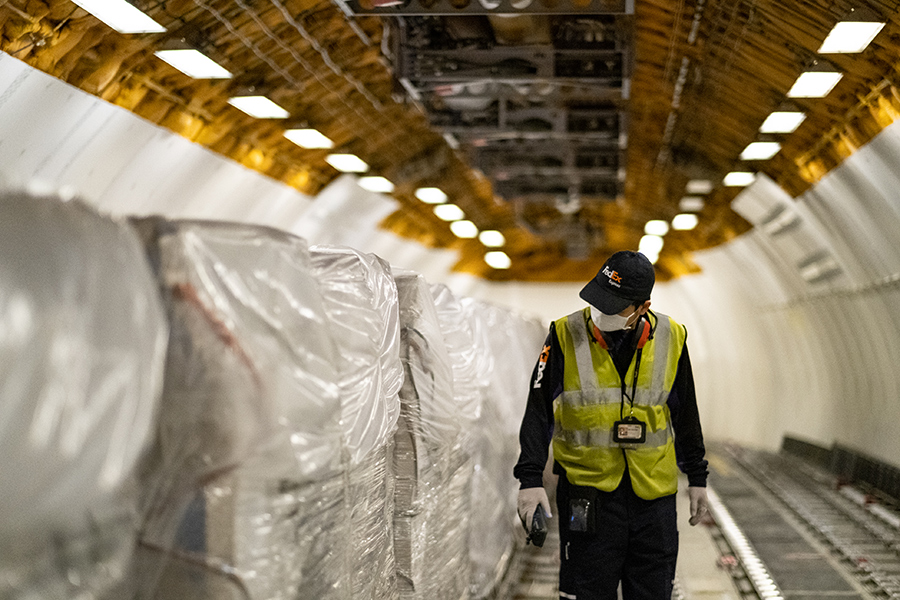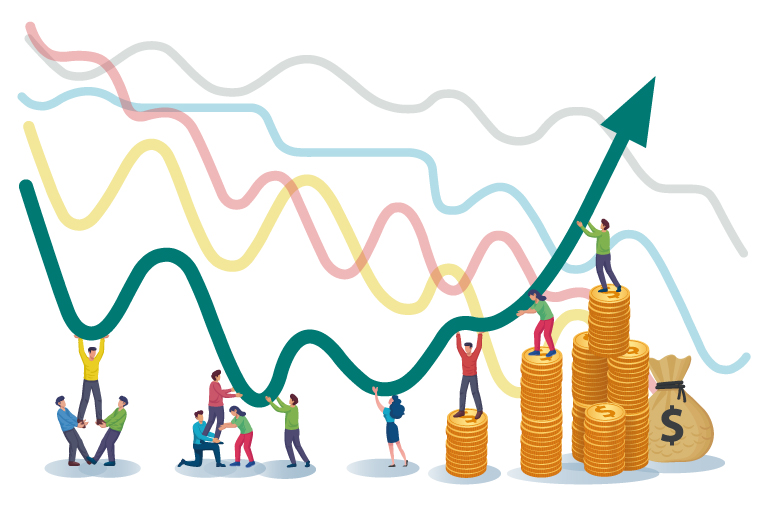4 Tips For Enhanced Connectivity To Transform Your Business
Increased connectivity has transformed the business and logistics landscape in Asia. We reveal the four trends that can help SMEs take advantage.
- Thanks to the rapid advancement of e-commerce and technology, business connectivity is helping businesses scale and grow.
- SMEs that build the latest connectivity trends into their e-commerce strategies can deliver a better customer experience.
- When it comes to supply chains, it’s important that both digital and physical worlds intersect seamlessly for smooth operations.
Connectivity: it’s changing the face of business in Asia Pacific and the world. With technology advancing faster than ever, we’re more and more connected.
The rapid advancement of technology has boosted global connectivity, impacting individuals and businesses of all kinds. By far the greatest trigger point has been the advancement of GenAI. For many businesses, the AI test-and-learn phase has led to real wins in productivity, innovation, and crucially, revenue generation.
The logistics industry is no exception. While it is difficult to predict what exactly will happen next, there are four key trends influencing business connectivity in Asia.
The rapid advancement of technology has boosted global connectivity, impacting individuals and businesses of all kinds. By far the greatest trigger point has been the advancement of GenAI. For many businesses, the AI test-and-learn phase has led to real wins in productivity, innovation, and crucially, revenue generation.
The logistics industry is no exception. While it is difficult to predict what exactly will happen next, there are four key trends influencing business connectivity in Asia.
1. Online retail is now defined by hyper-connectivity

Online commerce has revolutionized how the world conducts business. In particular, Asia Pacific, home to four of the world’s top ten e-commerce markets is leading the charge.
Entrepreneurs, start-ups and SMEs can now ride on opportunities in our hyper-connected world and be part of international e-commerce. The trends and developments that have evolved within this space are contributing to digital connectivity.
E-tailers are now multi-platform, multi-channel operators with a tech stack that includes social commerce, personalization, chatbots, audience-focused digital marketing tools, AI-led campaigns, and more. There are endless ways to use data to connect with customers, new strategies, overseas markets, suppliers, logistics networks, and more.
Entrepreneurs, start-ups and SMEs can now ride on opportunities in our hyper-connected world and be part of international e-commerce. The trends and developments that have evolved within this space are contributing to digital connectivity.
E-tailers are now multi-platform, multi-channel operators with a tech stack that includes social commerce, personalization, chatbots, audience-focused digital marketing tools, AI-led campaigns, and more. There are endless ways to use data to connect with customers, new strategies, overseas markets, suppliers, logistics networks, and more.
2. The seamless intersection of physical and digital worlds is crucial

While the digital economy is going from strength to strength in Asia, it cannot stand alone. Robust physical support is essential for e-commerce activities to flourish. Companies of all sizes are creating e-commerce, omnichannel strategies that cover the ‘phygital’ world.
For retailers that have maintained both an online and physical, brick-and-mortar storefront, and have multiple touchpoints for customers to interact with, finding the right balance between digital and physical is crucial. What’s most important is creating a seamless, friction-free customer experience across your entire retail ecosystem.
The right phygital strategy looks different for everyone: some e-commerce stores were born online, whereas others were developed as a graduation from physical stores. Some businesses set up online first, and then launch physical retail spaces once a dedicated customer base has been established. It depends on your brand, product, and consumer preferences.
And logistics is fundamental to creating your e-commerce secret sauce where the digital and physical intersect.
Strong global transportation networks make trade speedier, more affordable and more reliable. Companies of all sizes now have access to global markets that were once unreachable.
For retailers that have maintained both an online and physical, brick-and-mortar storefront, and have multiple touchpoints for customers to interact with, finding the right balance between digital and physical is crucial. What’s most important is creating a seamless, friction-free customer experience across your entire retail ecosystem.
The right phygital strategy looks different for everyone: some e-commerce stores were born online, whereas others were developed as a graduation from physical stores. Some businesses set up online first, and then launch physical retail spaces once a dedicated customer base has been established. It depends on your brand, product, and consumer preferences.
And logistics is fundamental to creating your e-commerce secret sauce where the digital and physical intersect.
Strong global transportation networks make trade speedier, more affordable and more reliable. Companies of all sizes now have access to global markets that were once unreachable.
3. Global supply chains: the match point of business success

While digitalization has lowered the barriers for small businesses to enter international markets, we must recognize that the competition is intensifying.
Customers now expect businesses to be fully accountable for the entire customer journey, even the parts they are not directly responsible for.
SMEs that can ensure seamless end-to-end experiences from order to return jump one step ahead of the game - inspiring loyalty and driving repeat business.
Your ecosystem must have the capacity to reach millions of consumers worldwide. But it also needs to offer secure payment, instant order fulfilment, tracking, returns, and even shopping cart management. And access to real-time tracking and end-to-end visibility is a more recent network connectivity trend that’s become the norm.
Customers now expect businesses to be fully accountable for the entire customer journey, even the parts they are not directly responsible for.
SMEs that can ensure seamless end-to-end experiences from order to return jump one step ahead of the game - inspiring loyalty and driving repeat business.
Your ecosystem must have the capacity to reach millions of consumers worldwide. But it also needs to offer secure payment, instant order fulfilment, tracking, returns, and even shopping cart management. And access to real-time tracking and end-to-end visibility is a more recent network connectivity trend that’s become the norm.
4. The influx of high-tech businesses and high-value- added goods

In Asia, one of the most prominent challenges faced by societies is aging populations. Demand for high-tech and high-value-added goods for the healthcare industry is on the rise, fueling remarkable growth across the region. Perhaps the greatest example of digital connectivity in logistics is the transportation of packages that come with unique requirements, such as strict temperature control.
Thanks to the Internet of Things and sensor-based technology, high-tech and high-value-added goods can be transported with near real-time visibility, ensuring the goods remain viable and safe.
Trends in connectivity are fundamentally reshaping the business landscape today – and they are just the tip of the iceberg in our hyper-connected world. As the cargo in our planes and vehicles evolves, the smartest, best-connected businesses in Asia will be in a position to thrive.
Thanks to the Internet of Things and sensor-based technology, high-tech and high-value-added goods can be transported with near real-time visibility, ensuring the goods remain viable and safe.
Trends in connectivity are fundamentally reshaping the business landscape today – and they are just the tip of the iceberg in our hyper-connected world. As the cargo in our planes and vehicles evolves, the smartest, best-connected businesses in Asia will be in a position to thrive.
***



















 The Latest
The Latest